After enjoying warm and sunny Oman we returned to a cool and rainy Valencia. It has been unusually chilly in our lovely Mediterranean city (it’s barely above the mid 50s most days). When I can’t escape the cold, I resolve to find ways to embrace winter. Once again, Spain has provided.
It’s Calçot Season!
After just a few days back in Valencia, we joined our good friends, Sheila and Richard, for a unique Catalan food experience – calçots (pronounced cal-shots). On the recommendation of a cab driver, they had trekked out to Asador Monte Mayor last year and were eager to return. A forty-minute metro ride followed by a fifteen-minute walk led us to this lovely restaurant in Manises, a small-town northwest of Valencia. It was a wintertime culinary adventure!
What is a Calçot?
A cross between a spring onion and a leek. Sweet, tender, and delicious. Calçots come into season in November and are available until March or early April. They are beloved in Catalonia and there’s more than a century of tradition celebrating this gastronomic treat. In fact, calçots have earned a Protected Geographical Indication (PGI) label from the European Union. (Products with a protected geographical indication have a particular quality, reputation or other characteristic attributable to a geographical origin.) Along with this designation, there are rules, of course. For example, to comply with regulations, each calçot must measure between 15 and 25 centimeters long.
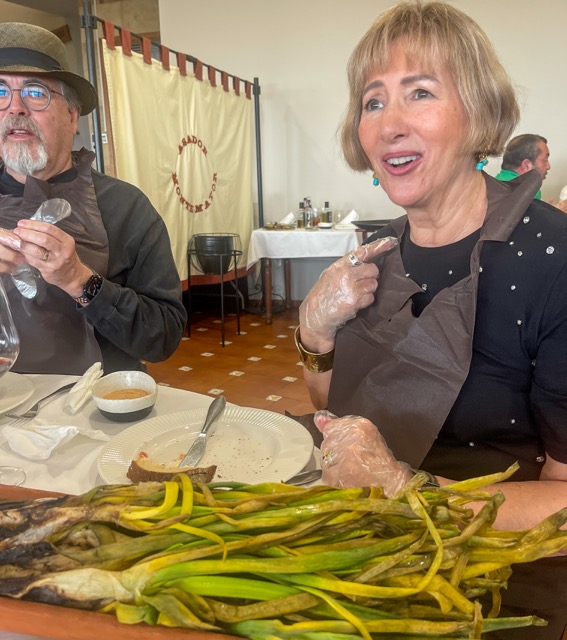
How to cook calçots?
Grilled over a wood fire – not embers – the outer layer is charred by a full flame. When removed from the grill calçots are wrapped in newspaper, which makes them sweat, and therefore become even more tender.
How to Eat a Calçot?
Hold the calçot by the green tops with one hand and peel off the outer layer of charred skin with the other hand. Dip the calçot into the special sauce called Salvixada (like Romesco). Lift the calçot over your mouth, and bite off the white part – the green tops are discarded. Sip some red wine or sparkling cava. Repeat. It’s customary to wear a large bib and gloves to prevent going home with stained clothing.
The feast doesn’t end with calçots. After piles of calçots come all types of grilled meats—like Botifarra, the traditional Catalan sausage, lamb, rabbit, and more. These are all delicious when dipped in Romesco sauce as well. And of course, it’s all washed down with plenty of local wine.
An Excuse to Gather!
The most traditional way of eating calçots is at a Calçotada, a gastronomic celebration where barbecued calçots are consumed in massive quantities. The most famous Calçotada is in the town of Valls (where calçots originated) during the last week of January. These are calçot eating parties – the Spanish love to gather to enjoy a meal with family and friends. We’ve agreed to make an annual pilgrimage to Asador Monte Mayor for calçots with Sheila and Richard. Maybe we’ll even head up to Valls to experience a calçotada next year. Would you like to join us?
Enjoying calçots will hold me over until those months without a “R” in their name when Valencia’s amazing mussels, Clochinas al vapor (steamed mussels), are back in season.
About Us
Welcome to our little corner of the world where we invite you to embark on exciting journeys with us!
We’re Ed and Bonnie, a duo passionate about exploring the world and experiencing its wonders. Our love for travel isn’t just about discovering new places; it’s about sharing those moments with cherished family and friends like you.
Our hope is that you will feel like you’re right there with us, sharing in the excitement and wonder of each destination. Better yet, let’s plan a rendezvous somewhere wonderful! Learn more

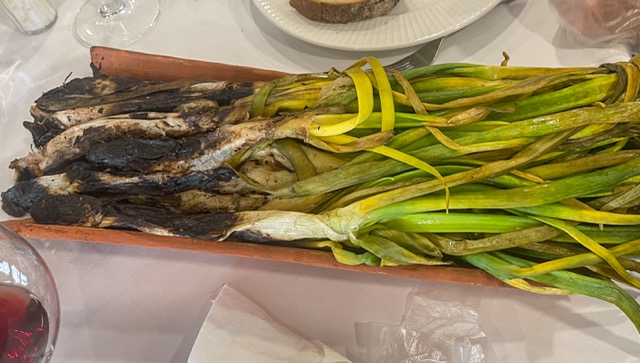
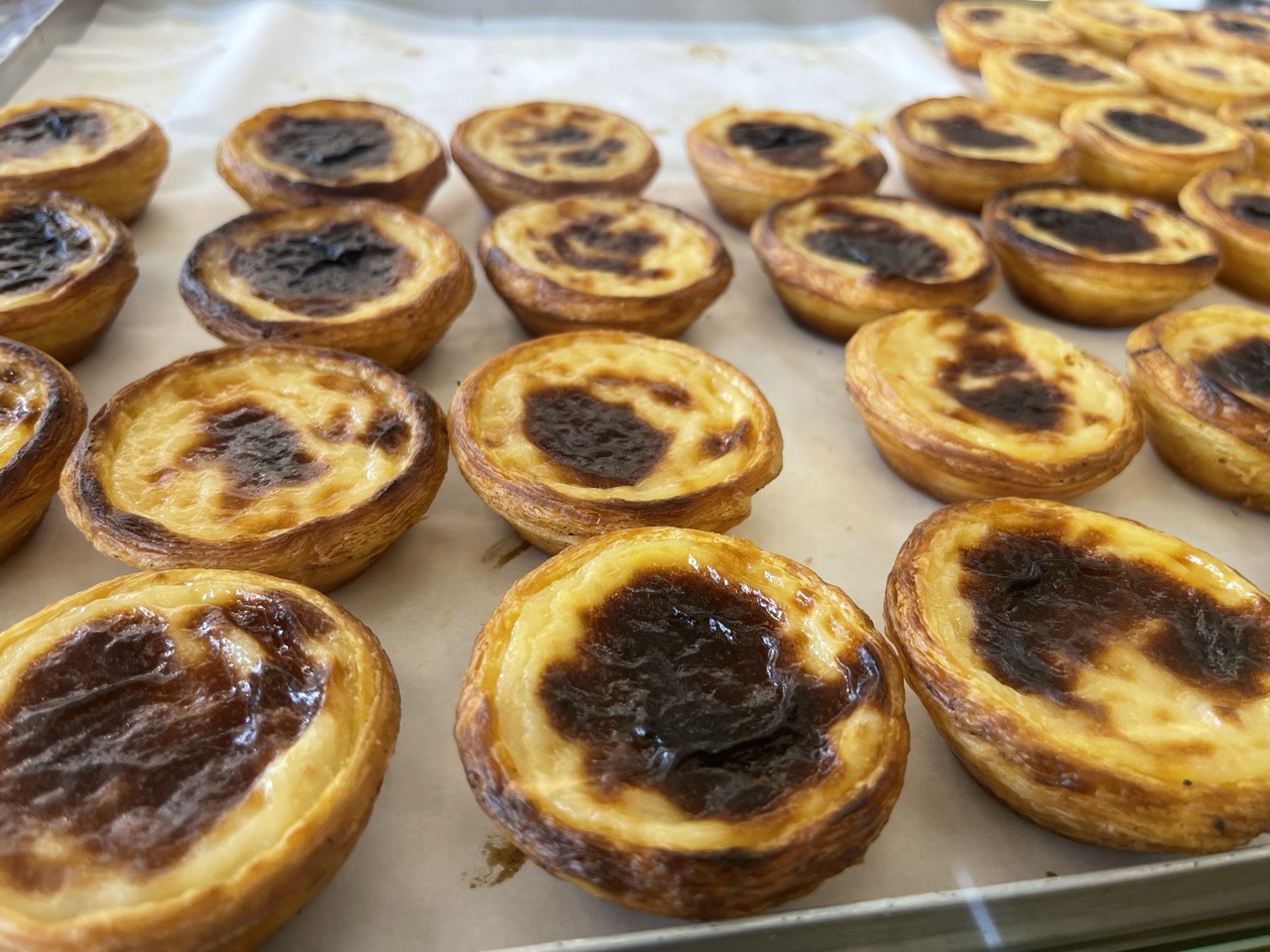
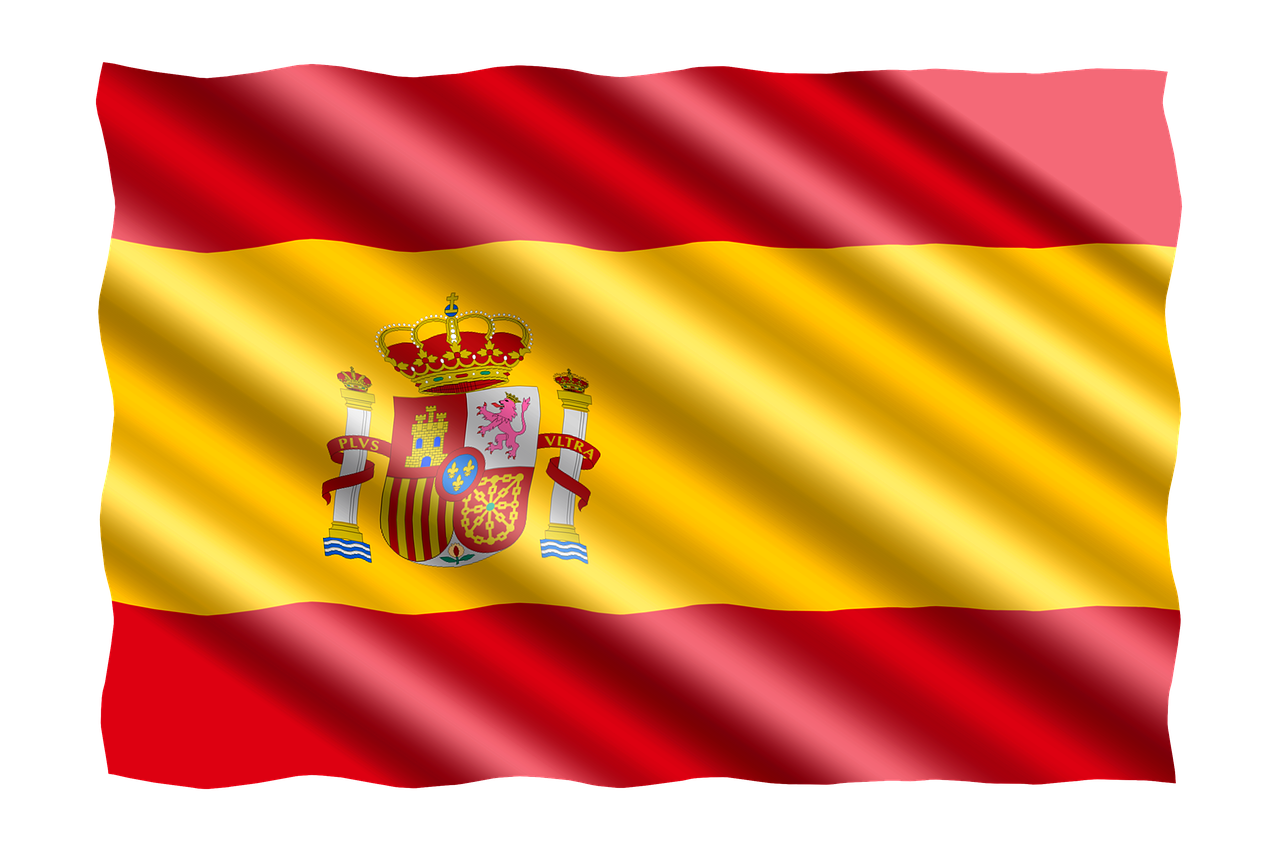
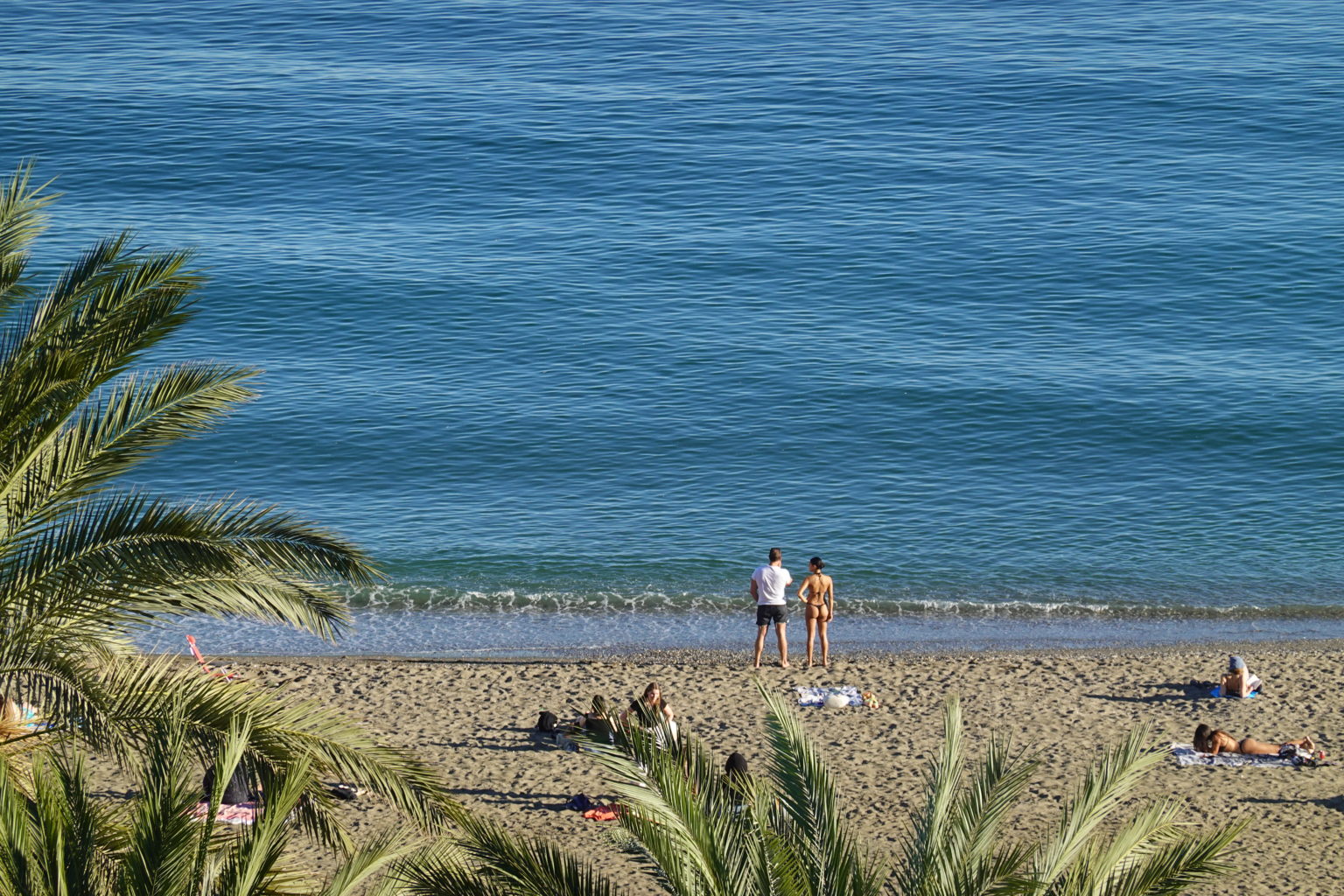
Not an onion lover but these look delicious even to me!